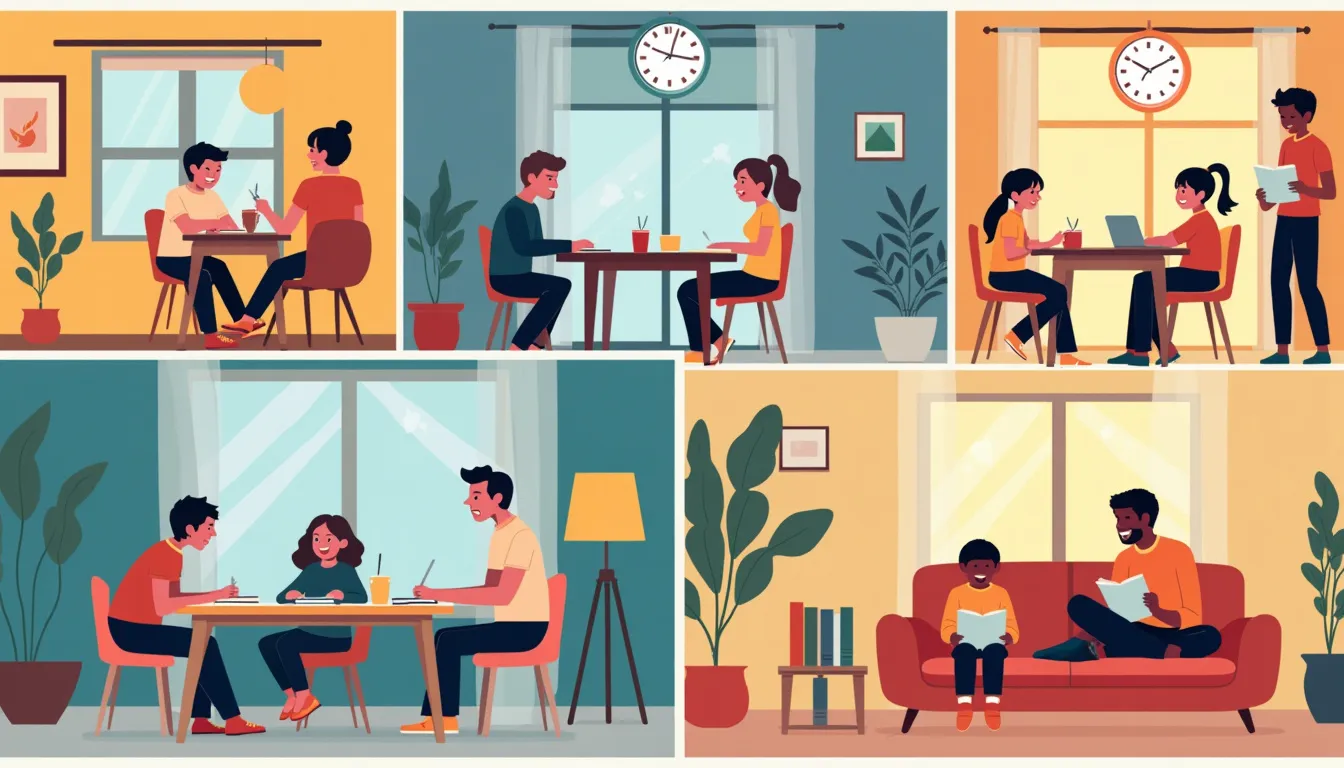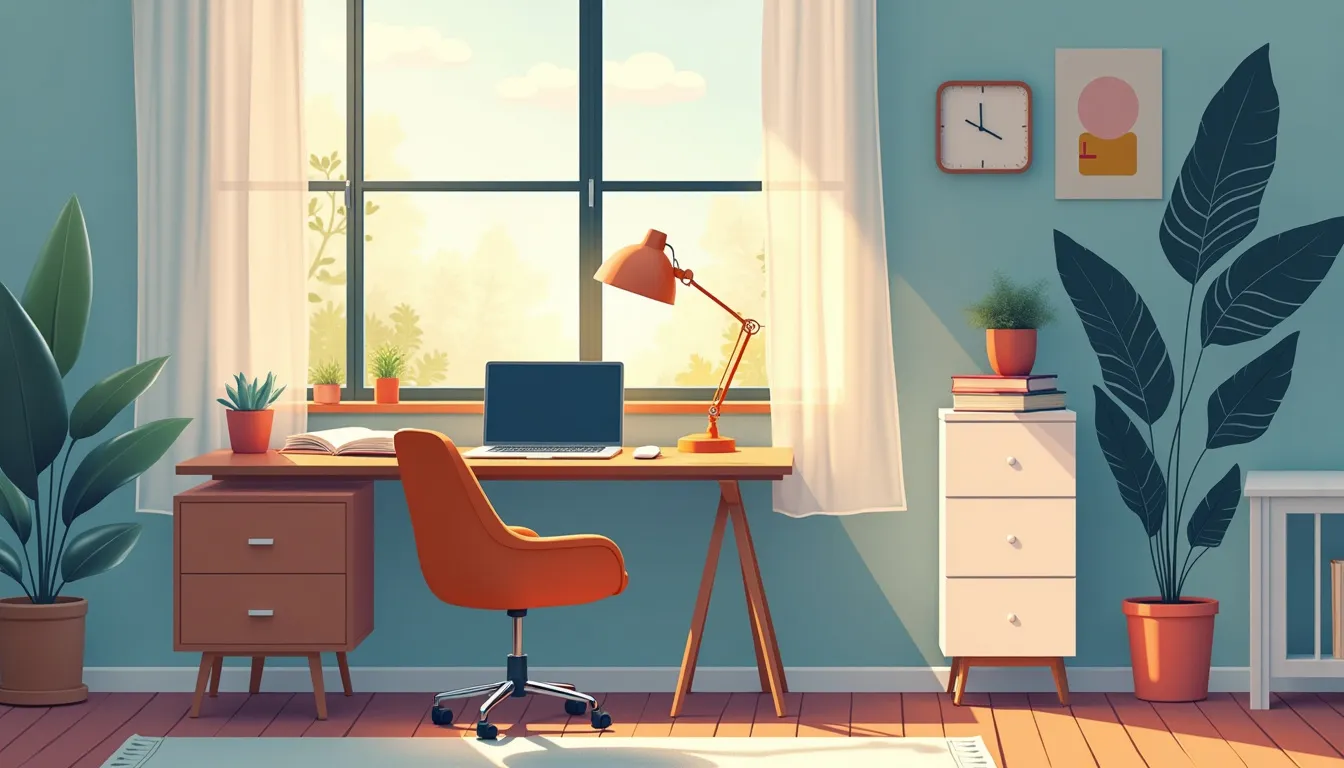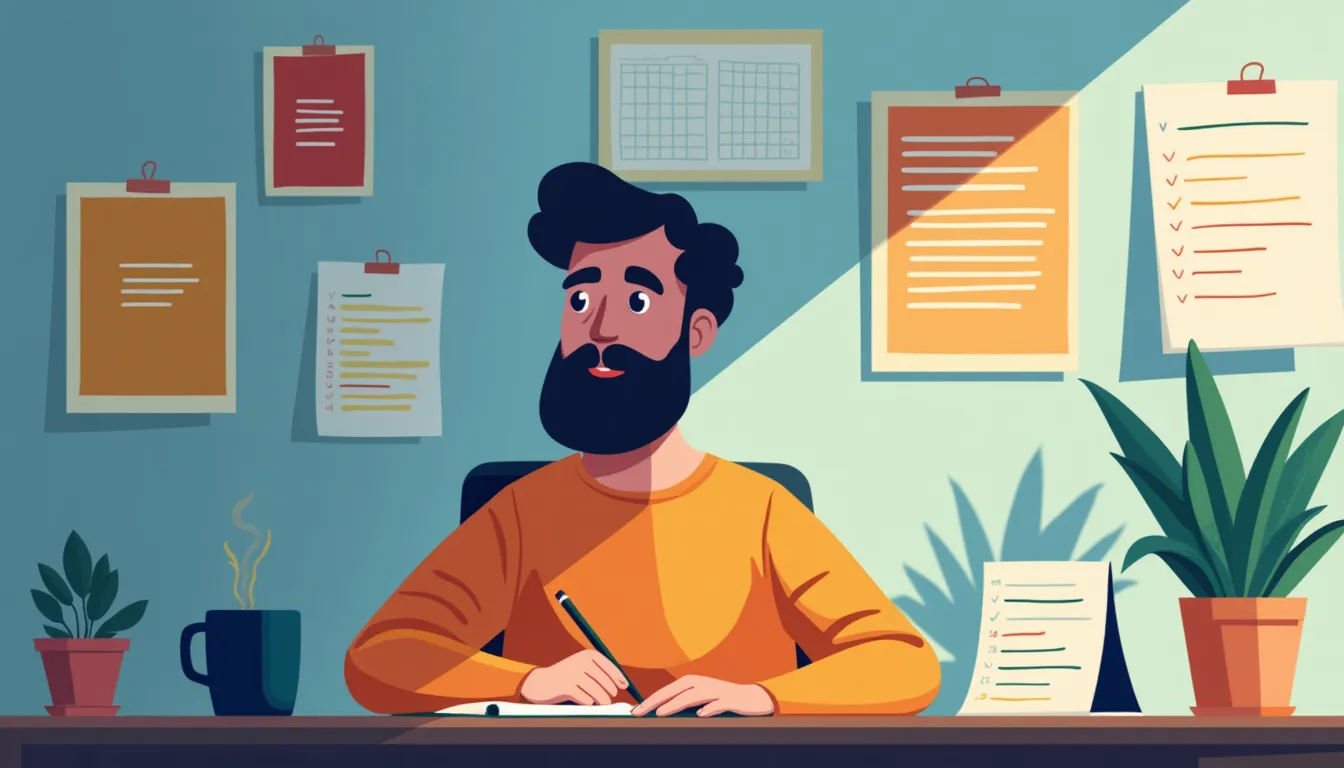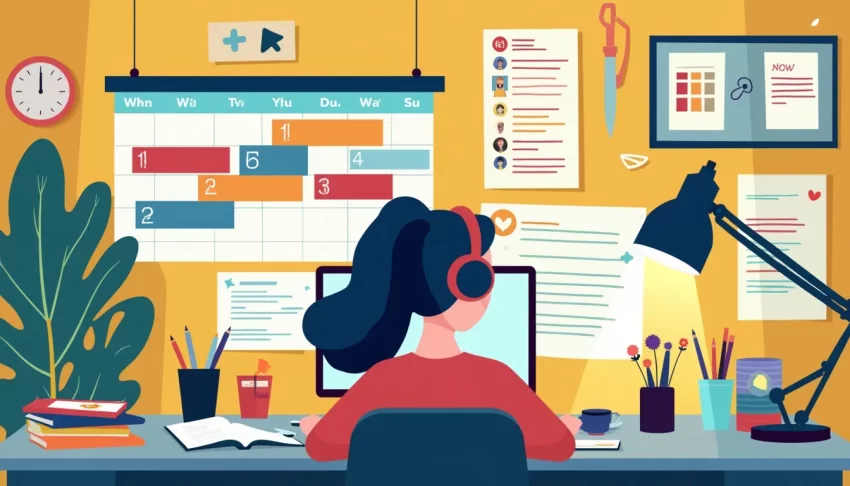Living with ADHD (Attention Deficit Hyperactivity Disorder) often means navigating a world that can feel both overwhelming and under-stimulating at the same time. For many of us, the ebb and flow of daily life becomes a delicate dance of managing attention, energy, and focus. This neurological condition, characterized by symptoms such as inattentiveness, hyperactivity, and impulsiveness, can make the simplest of tasks seem insurmountable. The impact of ADHD on daily productivity is profound, often leading to a cycle of unfinished tasks, missed deadlines, and mounting stress.
Given this backdrop, the importance of addressing productivity challenges for people with ADHD cannot be overstated. It’s not merely about getting things done; it’s about reclaiming control, building confidence, and fostering a sense of accomplishment. The ripple effects of enhanced productivity touch every aspect of life, from professional success to personal well-being. Through targeted strategies and mindful adjustments, it is possible to harness the unique strengths of the ADHD brain while mitigating its challenges.
In this article, we delve into effective productivity tips tailored specifically for individuals with ADHD. We’ll explore the power of establishing structured routines and how they can anchor your day with predictability and purpose. We’ll discuss the creation of distraction-free workspaces that will bolster your ability to focus and sustain attention. Additionally, we’ll examine the technique of breaking tasks into manageable chunks, providing you with actionable methods to tackle your to-do list without feeling overwhelmed.
By understanding and implementing these strategies, you can create a more productive and fulfilling life. Whether you’re a professional juggling multiple projects or someone striving for better personal management, these tips offer practical, relatable insights. Let’s embark on this journey towards enhanced productivity together, armed with knowledge, resources, and a good dose of self-compassion.
Understanding ADHD and Productivity
Attention Deficit Hyperactivity Disorder (ADHD) is a neurodevelopmental disorder characterized by symptoms such as inattention, hyperactivity, and impulsivity. For individuals with ADHD, daily life can be a whirlwind of missed appointments, forgotten responsibilities, and uncompleted projects. It’s a unique cognitive variation that, while accompanied by challenges, often comes with strengths like creativity and high energy levels. However, the struggle to achieve and maintain productivity is a common one.
Addressing productivity challenges is crucial for people with ADHD because it has a direct impact on their personal and professional lives. Being productive helps in managing time effectively, reducing stress, and achieving goals. For someone with ADHD, achieving a balance between leveraging their strengths and managing their difficulties can make a world of difference. The constant battle against distractions, forgetfulness, and difficulty in organizing tasks can feel overwhelming. Thus, learning and implementing effective productivity strategies is not just beneficial but essential.
In this article, we will explore a range of productivity tips tailored specifically for individuals with ADHD. These tips are designed to harness the strengths of someone with ADHD while mitigating the challenges they face. From establishing structured routines to breaking tasks into manageable chunks, each section will provide practical advice and actionable steps.
With routines, we aim to create a predictable pattern that can ease the chaos of everyday life. A clutter-free workspace will help minimize distractions and keep focus steady. Segmenting tasks into smaller, more manageable pieces will make daunting projects seem achievable. As someone who knows these challenges firsthand—balancing a busy professional life in safety and AI while managing ADHD and OCD—I can attest to the effectiveness of these strategies. Let’s dive in and uncover these productivity tips that can transform everyday chaos into organized efficiency.

Tip 1: Establishing Structured Routines
The significance of structured routines for individuals with ADHD cannot be overstated. For someone like me, juggling the complexities of safety protocols and AI innovations while managing ADHD, OCD, and even personal challenges like weight loss, routines have been a lifeline. But why are they so crucial? Well, routines help create a predictable environment, reducing the overwhelming feeling that often accompanies the disorder. They provide clarity and direction, helping to keep the myriad of tasks in check.
Step-by-Step Guide to Creating a Daily Schedule
Creating a daily schedule might sound like a daunting task, but it’s simpler than you think. Here’s a step-by-step guide that has helped me and can help you establish a structured routine:
- Identify Your Key Activities: Begin by making a list of all the activities you need to complete in a day. Include everything – work tasks, personal errands, exercise, meal times, and even downtime.
- Prioritize Your Tasks: Rank your activities in terms of priority. For instance, high-priority tasks like work projects or important meetings should take precedence over less critical tasks.
- Set Specific Time Blocks: Assign specific time blocks to each activity. For example, 9-11 AM can be dedicated to writing reports, 11-12 PM could be for checking emails, and so forth.
- Include Breaks: Incorporate short breaks between activities to prevent burnout. Even a 5-minute break after 25 minutes of focused work can make a significant difference.
- Be Flexible: While it’s important to stick to the schedule, allow some room for flexibility. Life can be unpredictable, and so can ADHD. Adjust your schedule as needed to accommodate unexpected events.
- Review and Adjust: At the end of the day, review what worked and what didn’t. Adjust your schedule accordingly for the next day.
Think of your schedule as the anchor that keeps you grounded amidst the chaos. This structured approach is particularly beneficial for those with ADHD, offering much-needed stability and focus.
Tools and Apps to Help Maintain and Track Routines
In today’s digital age, there’s an abundance of tools and apps designed to help maintain and track routines. Here are a few that have garnered my stamp of approval:
- Trello: Trello is an excellent project management tool that allows you to create boards for different tasks and assign deadlines. You can also integrate it with other productivity tools.
- Todoist: This app is perfect for creating to-do lists and setting reminders. Its intuitive design makes task management easier and more organized.
- Habitica: Gamify your routines with Habitica. It transforms your daily tasks into a game, rewarding you for completing tasks and building habits.
- Google Calendar: A staple for many, Google Calendar helps you schedule tasks, set reminders, and integrate with other Google services for seamless planning.
- Forest: An app that encourages deep work by allowing you to grow a virtual tree that flourishes as you stay off your phone. Combine focus with environmental conservation – a win-win!
- Time Timer: Particularly effective for those with ADHD, this visual timer helps you keep track of time spent on tasks, ensuring you stay within your schedule.
These tools are not just about keeping you on task; they’re about empowering you to manage your time and energy more effectively. With them, you can transform what might seem like a cumbersome process into a more manageable and even enjoyable one.
Let me share a quick story to showcase the impact of structured routines and tools. During a particularly stressful project where I was juggling multiple safety and AI deliverables, I found myself increasingly overwhelmed. My ADHD magnified the chaos, making it hard to focus. That’s when I discovered Trello. By organizing my tasks on it and setting clear deadlines, I gained better control over my workload. The visual representation of my tasks and progress provided clarity and a sense of accomplishment, which was incredibly motivating.
Establishing structured routines and leveraging the right tools can significantly enhance productivity for individuals with ADHD. It’s about creating a framework that supports your unique needs and turning chaos into order, one step at a time.

Tip 2: Creating a Distraction-Free Workspace
For those living with ADHD, creating a distraction-free workspace is akin to setting the stage for a successful performance. The right environment can significantly enhance focus and productivity, turning a chaotic mind into a well-orchestrated symphony. A clutter-free space not only reduces the sensory overload that many with ADHD experience but also provides a mental sanctuary where tasks can be tackled one at a time.
How a Clutter-Free Environment Enhances Focus
Picture this: You sit at your desk only to find yourself surrounded by piles of paper, random knick-knacks, and to-do lists that seem to multiply by the minute. For someone with ADHD, this scenario can be more than just a nuisance; it can be a major roadblock to productivity. Research has shown that physical clutter can lead to mental clutter, making it harder for people with ADHD to focus on the task at hand.
Professional experience and personal struggles have proven this. I recall a client who was an exceptionally talented software developer but struggled to meet deadlines due to his cluttered desk space. It wasn’t until he adopted a minimalist approach, clearing all non-essential items, that his productivity skyrocketed. This transformation highlights the tremendous impact a tidy workspace can have.
Practical Strategies to Minimize Distractions
Reducing distractions in your workspace doesn’t require an overhaul; small, consistent changes can yield significant results. Here are some actionable strategies:
- Declutter Regularly: Dedicate a few minutes at the end of each day to clear your desk. When everything has its place, your mind can be at ease.
- Use Noise-Cancelling Headphones: Background noises can be extremely irritating for someone with ADHD. Invest in a good pair of noise-cancelling headphones to create a more serene environment.
- Limit Digital Distractions: Install apps like Focus@Will or Freedom to block distracting websites and notifications during work hours.
- Create Zones: Designate specific areas for different types of activities. For example, have a reading corner, a workspace, and a relaxation spot within your office.
- Visual Cues: Use color-coding and labeled folders to keep important documents organized and easily accessible.
Recommended Organizational Tools and Techniques
Technology, when wielded effectively, can be a game-changer for those struggling to maintain a distraction-free workspace. Here are some tools and techniques that can aid in this endeavor:
- Kanban Boards: Tools like Trello or physical Kanban boards help in visualizing tasks and workflows, making it easier to see what needs to be done at a glance.
- Desk Organizers: Simple desk organizers can keep your workspace tidy. Use them to sort pens, documents, and other office supplies.
- Pomodoro Timer Apps: Employ the Pomodoro Technique by using timer apps like Be Focused. Work for 25-minute intervals followed by a 5-minute break to maintain focus and avoid burnout.
- Whiteboards: Having a whiteboard within your line of sight can act as a visual reminder of your tasks and deadlines, keeping you anchored and on track.
- Digital Note-Taking Apps: Apps like Evernote or OneNote can help you keep track of ideas, tasks, and deadlines in a centralized, easily accessible location.
Creating a distraction-free workspace isn’t just about clearing physical clutter. It’s about creating an environment that helps you focus on what truly matters. By incorporating these strategies and tools into your routine, you’ll likely find a notable improvement in your productivity and overall well-being.

Tip 3: Breaking Tasks into Manageable Chunks
One of the most effective productivity tips for people with ADHD is breaking tasks down into manageable chunks. Individuals with ADHD often find themselves overwhelmed by large, daunting projects. By dissecting these projects into smaller, more digestible parts, productivity can see a considerable boost.
Think of it as a giant pizza. If you try to eat the whole thing in one go, you’re bound to feel overwhelmed (and quite stuffed). But slice by slice, it becomes a lot more manageable, even enjoyable. This is the essence of task segmentation. Let’s delve into how you can effectively apply this strategy to improve your productivity.
The Importance of Task Segmentation for ADHD
Task segmentation is incredibly beneficial for ADHD minds because it aligns with how they function best—by focusing on one small piece at a time. Individuals with ADHD often struggle with executive functioning, the mental process that includes working memory, flexible thinking, and self-control. When overwhelmed, it’s easy for them to shut down altogether. By breaking tasks into smaller steps, it becomes easier to maintain focus, track progress, and manage time more efficiently.
For instance, consider a common household chore like cleaning the kitchen. Looking at it as a whole might trigger procrastination due to its perceived complexity. However, if you break it down into smaller tasks like ‘clear the counters,’ ‘wash the dishes,’ ‘wipe down surfaces,’ and ‘sweep the floor,’ each step feels more achievable and less intimidating.
Methods to Prioritize and Divide Tasks into Smaller Steps
Begin by identifying the overall goal and then brainstorm the individual steps needed to achieve it. Organize these tasks by priority, tackling the most critical or time-sensitive ones first. Here are a few methods to get you started:
1. Task Lists and Categorization
Create a list of tasks and categorize them based on priorities. This can be done on a simple piece of paper, a planner, or using digital tools like Trello or Asana. By visually organizing tasks, it becomes easier to see what needs immediate attention and what can wait, reducing feelings of overwhelm.
2. SMART Goals
Breaking tasks down using the SMART criteria (Specific, Measurable, Achievable, Relevant, Time-bound) ensures they’re not just smaller, but also clear and actionable. For example, instead of ‘write a report,’ you could break it down to ‘outline report structure,’ ‘research main topics for the report,’ and ‘write the introduction and first section by Friday.’
3. Batching Similar Tasks
Batching involves grouping similar tasks together and completing them in one go. For instance, if you need to respond to several emails, set aside a block of time specifically for that purpose rather than interrupting other activities. This helps maintain a focused mindset and improves efficiency.
Techniques to Increase Focus and Efficiency
Once you have your tasks segmented, applying specific techniques can further enhance your focus and productivity. Here are some proven strategies:
The Pomodoro Technique
Perhaps one of the most famous techniques, the Pomodoro Technique involves working for a set amount of time (usually 25 minutes), then taking a short break (5 minutes). After completing four work intervals, you take a longer break (15-30 minutes). This method helps manage distractions by creating defined periods of focus and rest, which can be especially beneficial for individuals with ADHD.
The Two-Minute Rule
If a task will take less than two minutes to complete, do it immediately. This rule helps combat procrastination and prevents small tasks from piling up, creating a more manageable workload.
The Eisenhower Box
Also known as the Urgent-Important Matrix, this method involves categorizing tasks into four quadrants based on urgency and importance. This helps prioritize tasks effectively: complete tasks that are both urgent and important first, then move to important but not urgent items, and so on. This visual tool can be a game-changer for ADHD minds struggling with prioritization.
Mental Breaks and Physical Activity
Never underestimate the power of a well-timed break or a bit of physical activity. For individuals with ADHD, mental exhaustion can set in quickly. Incorporating short mental breaks or bursts of physical exercise can re-energize and improve overall productivity.
Breaking tasks into smaller chunks not only makes them more manageable but also provides a sense of accomplishment that can motivate you to continue. It’s a cycle of productivity and positivity that can lead to significant improvements in both personal and professional life.
Remember, it’s about making the large pizza of tasks into bite-sized pieces. Stay focused, take one task at a time, and celebrate each small victory along the way.
As we wrap up our discussion on productivity tips for people with ADHD, it’s clear that the journey to increased productivity is a marathon, not a sprint. We’ve explored the transformative power of establishing structured routines, the benefits of crafting a distraction-free workspace, and the practicality of breaking down tasks into manageable chunks. Each of these tips is a building block toward greater efficiency and a more organized life. However, implementing these strategies requires consistency and patience, two qualities that can be particularly challenging to maintain when navigating the unique landscape of ADHD.
Remember, it’s not just about fixing productivity issues overnight; it’s about creating sustainable habits that can be integrated into your daily life. Be kind to yourself during this process. Progress may be gradual, and there will undoubtedly be days when adhering to these new practices feels incredibly tough. That’s perfectly okay. What matters most is your perseverance and the willingness to get back on track, even after a setback.
Consider utilizing the resources and support systems available to you, whether it’s seeking guidance from a mental health professional, joining support groups, or using apps designed to assist with ADHD management. These tools and communities can provide practical help and emotional support, making the path forward less daunting.
In conclusion, embrace the journey with an open heart and a determined mind. Remember that productivity, especially for those of us navigating ADHD, is about finding what works best for you personally and being flexible enough to adapt as needed. So, go ahead and test these tips, tweak them to your liking, and most importantly, celebrate your progress, no matter how small. Productivity is within your reach, and with consistent effort and a bit of self-compassion, you’ll find your stride. Onward and upward!
Support Us: Check out our recommended products on Amazon.

